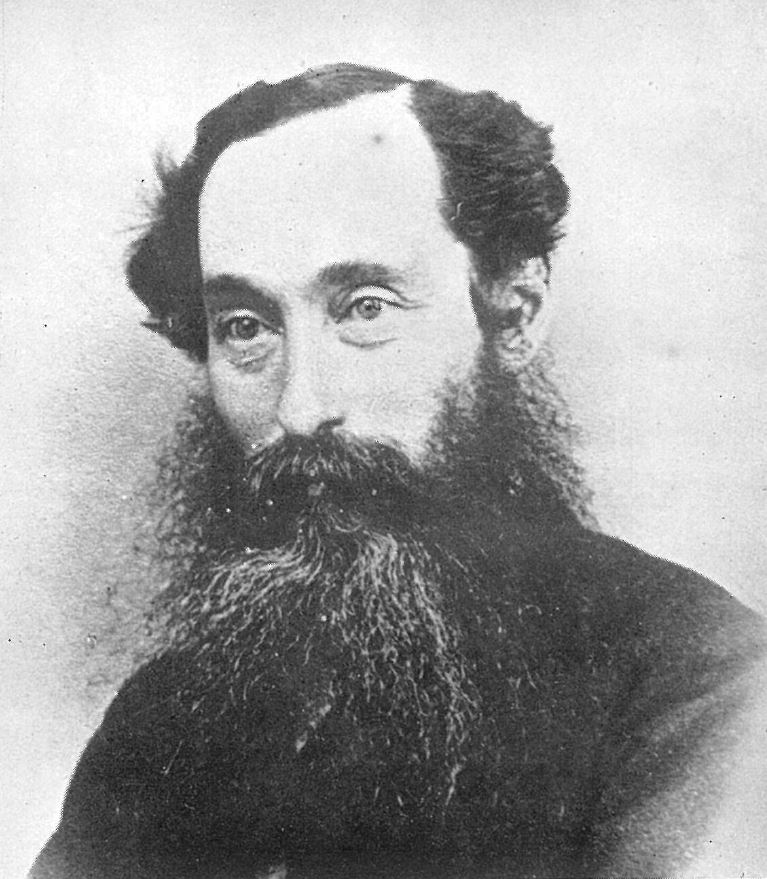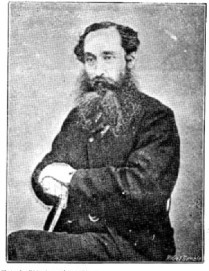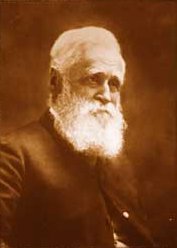|
Clive (New Zealand Electorate)
Clive was a parliamentary electorate in the Hawke's Bay Region of New Zealand from 1861 to 1881. Population centres The electorate was centred on the town of Clive. History Clive was formed for the 3rd New Zealand Parliament The 3rd New Zealand Parliament was a term of the Parliament of New Zealand. Elections for this term were held between 12 December 1860 and 28 March 1861 in 43 electorates to elect 53 MPs. Two electorates were added to this during this term, Go ..., i.e. in 1861. It existed until 1881. During this period, Clive was represented by one Member of Parliament, John Davies Ormond. Members Key References {{Historic electorates of New Zealand , state=collapsed Historical electorates of New Zealand Politics of the Hawke's Bay Region 1860 establishments in New Zealand 1881 disestablishments in New Zealand ... [...More Info...] [...Related Items...] OR: [Wikipedia] [Google] [Baidu] |
New Zealand Electorates
An electorate or electoral district ( mi, rohe pōti) is a geographical constituency used for electing a member () to the New Zealand Parliament. The size of electorates is determined such that all electorates have approximately the same population. Before 1996, all MPs were directly chosen for office by the voters of an electorate. In New Zealand's electoral system, 72 of the usually 120 seats in Parliament are filled by electorate members, with the remainder being filled from party lists in order to achieve proportional representation among parties. The 72 electorates are made up from 65 general and seven Māori electorates. The number of electorates increases periodically in line with national population growth; the number was increased from 71 to 72 starting at the 2020 general election. Terminology The Electoral Act 1993 refers to electorates as "electoral districts". Electorates are informally referred to as "seats", but technically the term '' seat'' refers to an electe ... [...More Info...] [...Related Items...] OR: [Wikipedia] [Google] [Baidu] |
Hawke's Bay Region
Hawke's Bay ( mi, Te Matau-a-Māui) is a local government region on the east coast of New Zealand's North Island. The region's name derives from Hawke Bay, which was named by Captain James Cook in honour of Admiral Edward Hawke. The region is governed by Hawke's Bay Regional Council. Geography The region is situated on the east coast of the North Island. It bears the former name of what is now Hawke Bay, a large semi-circular bay that extends for 100 kilometres from northeast to southwest from Māhia Peninsula to Cape Kidnappers. The Hawke's Bay Region includes the hilly coastal land around the northern and central bay, the floodplains of the Wairoa River in the north, the wide fertile Heretaunga Plains around Hastings in the south, and a hilly interior stretching up into the Kaweka and Ruahine Ranges. The prominent peak Taraponui is located inland. Five major rivers flow to the Hawke's Bay coast. From north to south, they are the Wairoa River, Mohaka River, Tutaekuri ... [...More Info...] [...Related Items...] OR: [Wikipedia] [Google] [Baidu] |
Clive, New Zealand
Clive is a small town, ten kilometres from the city centres of both Napier and Hastings in the Hawke's Bay region of New Zealand's North Island. It is close to the mouth of the Ngaruroro River. The town is part of the Hastings district. It was named (like many of the towns in the vicinity) after a prominent person from imperial India, in this case Robert Clive, better known as "Clive of India". The name was given by John Curling. The town of Clive is mainly rural, yet with the increasing number of people moving into Hawke's Bay, and Clive being at the meeting point of Hastings and Napier, new subdivisions are being built to accommodate the growing population. Clive is home to the Hawke's Bay Rowing Club who train on the Clive River. The Hawke's Bay Rowing Regatta is held on the first weekend of the year and was started in 1872. Demographics Clive had a population of 2,247 at the 2018 New Zealand census, an increase of 165 people (7.9%) since the 2013 census, and an increa ... [...More Info...] [...Related Items...] OR: [Wikipedia] [Google] [Baidu] |
3rd New Zealand Parliament
The 3rd New Zealand Parliament was a term of the Parliament of New Zealand. Elections for this term were held between 12 December 1860 and 28 March 1861 in 43 electorates to elect 53 MPs. Two electorates were added to this during this term, Gold Fields District (overlaid over existing Otago electorates) and a new Dunedin electorate created by splitting the existing City of Dunedin into Dunedin and Suburbs North and Dunedin and Suburbs South, increasing the number of MPs to 57. During the term of this Parliament, six Ministries were in power. Historical context The third Parliament opened on 3 June 1861 (after a postponement from the previously announced date of 30 May 1861), following New Zealand's 1860–1861 election. It was the second Parliament under which New Zealand had responsible government, meaning that unlike the first Parliament, the Cabinet was chosen (although not officially appointed) by Parliament rather than by the Governor. Political parties had not been est ... [...More Info...] [...Related Items...] OR: [Wikipedia] [Google] [Baidu] |
Member Of Parliament
A member of parliament (MP) is the representative in parliament of the people who live in their electoral district. In many countries with bicameral parliaments, this term refers only to members of the lower house since upper house members often have a different title. The terms congressman/congresswoman or deputy are equivalent terms used in other jurisdictions. The term parliamentarian is also sometimes used for members of parliament, but this may also be used to refer to unelected government officials with specific roles in a parliament and other expert advisers on parliamentary procedure such as the Senate Parliamentarian in the United States. The term is also used to the characteristic of performing the duties of a member of a legislature, for example: "The two party leaders often disagreed on issues, but both were excellent parliamentarians and cooperated to get many good things done." Members of parliament typically form parliamentary groups, sometimes called caucuse ... [...More Info...] [...Related Items...] OR: [Wikipedia] [Google] [Baidu] |
John Davies Ormond
John Davies Ormond (31 May 1831 – 6 October 1917) was a New Zealand politician whose positions included Superintendent (politics), Superintendent of Hawke's Bay Province, Minister of Public Works and member of the New Zealand Legislative Council. He represented the Clive (New Zealand electorate), Clive electorate in Parliament from 1860–1861 New Zealand general election, 1861 to 1881, when he was defeated (standing for the electorate of Waipawa (New Zealand electorate), Waipawa). He then represented the Napier (New Zealand electorate), Napier electorate from to 1890, when he retired. He was appointed to the New Zealand Legislative Council, Legislative Council on 20 January 1891 and served until his death on 6 October 1917. He was appointed to the Council as one of seven new members (including Harry Atkinson himself) appointed to the Council by the outgoing Atkinson Ministry, 1887–91, fourth Atkinson Ministry; a move regarded by New Zealand Liberal Party, Libera ... [...More Info...] [...Related Items...] OR: [Wikipedia] [Google] [Baidu] |
1860–1861 New Zealand General Election
The 1860–1861 New Zealand general election was held between 12 December 1860 and 28 March 1861 to elect 53 MPs to the third session of the New Zealand Parliament The New Zealand Parliament ( mi, Pāremata Aotearoa) is the unicameral legislature of New Zealand, consisting of the King of New Zealand (King-in-Parliament) and the New Zealand House of Representatives. The King is usually represented by hi .... 13,196 electors were registered. 1860 was the year gold miners who held a Miner’s Right continuously for at least three months were able to vote without having to own, lease or rent property. Results Notes References * {{DEFAULTSORT:1860-1861 New Zealand general election ... [...More Info...] [...Related Items...] OR: [Wikipedia] [Google] [Baidu] |
1866 New Zealand General Election
The 1866 New Zealand general election was held between 12 February and 6 April to elect 70 MPs to the fourth term of the New Zealand Parliament. In 1867 four Māori electorates were created, initially as a temporary measure for five years. The first Māori elections for these seats were held in 1868, with universal suffrage for Māori males over 21. The first four Māori members of parliament were Tareha Te Moananui (Eastern Maori), Frederick Nene Russell (Northern Maori) and John Patterson (Southern Maori), who all retired in 1870; and Mete Kīngi Paetahi (Western Maori Western Maori was one of New Zealand's four original parliamentary Māori electorates established in 1868, along with Northern Maori, Eastern Maori and Southern Maori. In 1996, with the introduction of MMP, the Maori electorates were updated, ...) who was defeated in 1871. Results a Moorhouse was elected in both the Mount Herbert and Westland electorates. He chose to represent Westland. Notes Ref ... [...More Info...] [...Related Items...] OR: [Wikipedia] [Google] [Baidu] |
1871 New Zealand General Election
The 1871 New Zealand general election was held between 14 January and 23 February to elect 78 MPs across 72 electorates to the fifth session of the New Zealand Parliament. 41,527 electors were registered. Background 1871 was the first general election to include the four Māori electorates, with elections held on 1 and 15 February. The first Māori Members of Parliament had been elected in 1868, but in 1871 three retired and one (Western Maori) was defeated. So in 1871 four new Māori MPs were elected. In 1866 the secret ballot was introduced for general (European) elections. The 1871 general election was the first one at which it was used. The secret ballot not used in Māori electorates until 1938, thus Māori voters continued to inform a polling officer orally of their chosen candidate. The date of election is defined here as the day on which the poll took place, or if there was no contest, the day of nomination. The earliest election day was 14 January 1871. The earliest da ... [...More Info...] [...Related Items...] OR: [Wikipedia] [Google] [Baidu] |
1875–1876 New Zealand General Election
The 1875–1876 New Zealand general election was held between 20 December 1875 and 29 January 1876 to elect a total of 88 MPs in 73 electorates to the 6th session of the New Zealand Parliament. The Māori vote was held on 4 and 15 January 1876. A total of 56,471 voters were registered. Background Political parties had not been established yet; this only happened after the 1890 election. The previous parliament had 78 representatives from 72 electorates. In October 1875, Parliament passed the Representation Act 1875, and resolved to increase the size of Parliament to 88 representatives through the following changes: * one additional member for City of Dunedin (from two to three) * the single member electorates of Christchurch East and Christchurch West to amalgamate and form the City of Christchurch electorate with three members * one additional member for Timaru ( was formed as a new electorate) * one additional member for Waitaki (from one to two) * one additional member ... [...More Info...] [...Related Items...] OR: [Wikipedia] [Google] [Baidu] |
1879 New Zealand General Election
The 1879 New Zealand general election was held between 28 August and 15 September 1879 to elect a total of 88 MPs to the 7th session of the New Zealand Parliament. The Māori vote was held on 8 September. A total of 82,271 (66.5%) European voters turned out to vote, plus 14,553 Māori voters. Following the election, John Hall formed a new government. Background Formal political parties had not been established yet; this only happened after the 1890 election. The same 73 electorates were used as for the last election, which was held in 1875–76. In October 1875, Parliament passed the Representation Act 1875, which resolved to increase the size of Parliament to 88 representatives across the 73 electorates. Two of the electorates were represented by three members each ( and Dunedin. A further eleven electorates were represented by two members each (Auckland West, , Grey Valley, , , City of Nelson, , , , Wanganui and City of Wellington). The remaining 60 electorates were repre ... [...More Info...] [...Related Items...] OR: [Wikipedia] [Google] [Baidu] |
Historical Electorates Of New Zealand
History (derived ) is the systematic study and the documentation of the human activity. The time period of event before the invention of writing systems is considered prehistory. "History" is an umbrella term comprising past events as well as the memory, discovery, collection, organization, presentation, and interpretation of these events. Historians seek knowledge of the past using historical sources such as written documents, oral accounts, art and material artifacts, and ecological markers. History is not complete and still has debatable mysteries. History is also an academic discipline which uses narrative to describe, examine, question, and analyze past events, and investigate their patterns of cause and effect. Historians often debate which narrative best explains an event, as well as the significance of different causes and effects. Historians also debate the nature of history as an end in itself, as well as its usefulness to give perspective on the problems of the p ... [...More Info...] [...Related Items...] OR: [Wikipedia] [Google] [Baidu] |







.jpg)